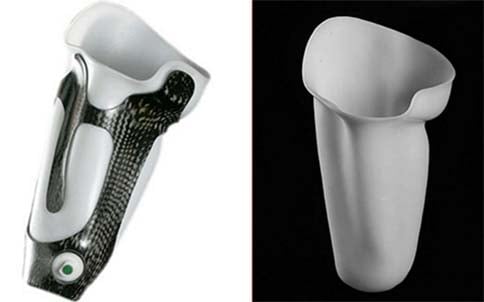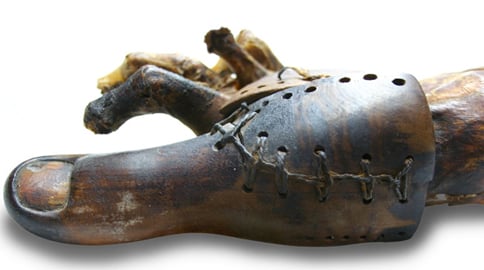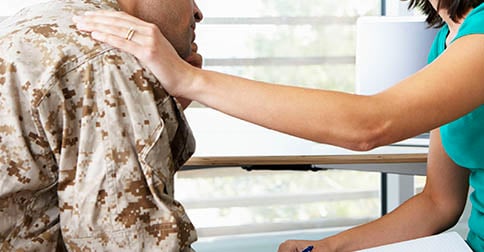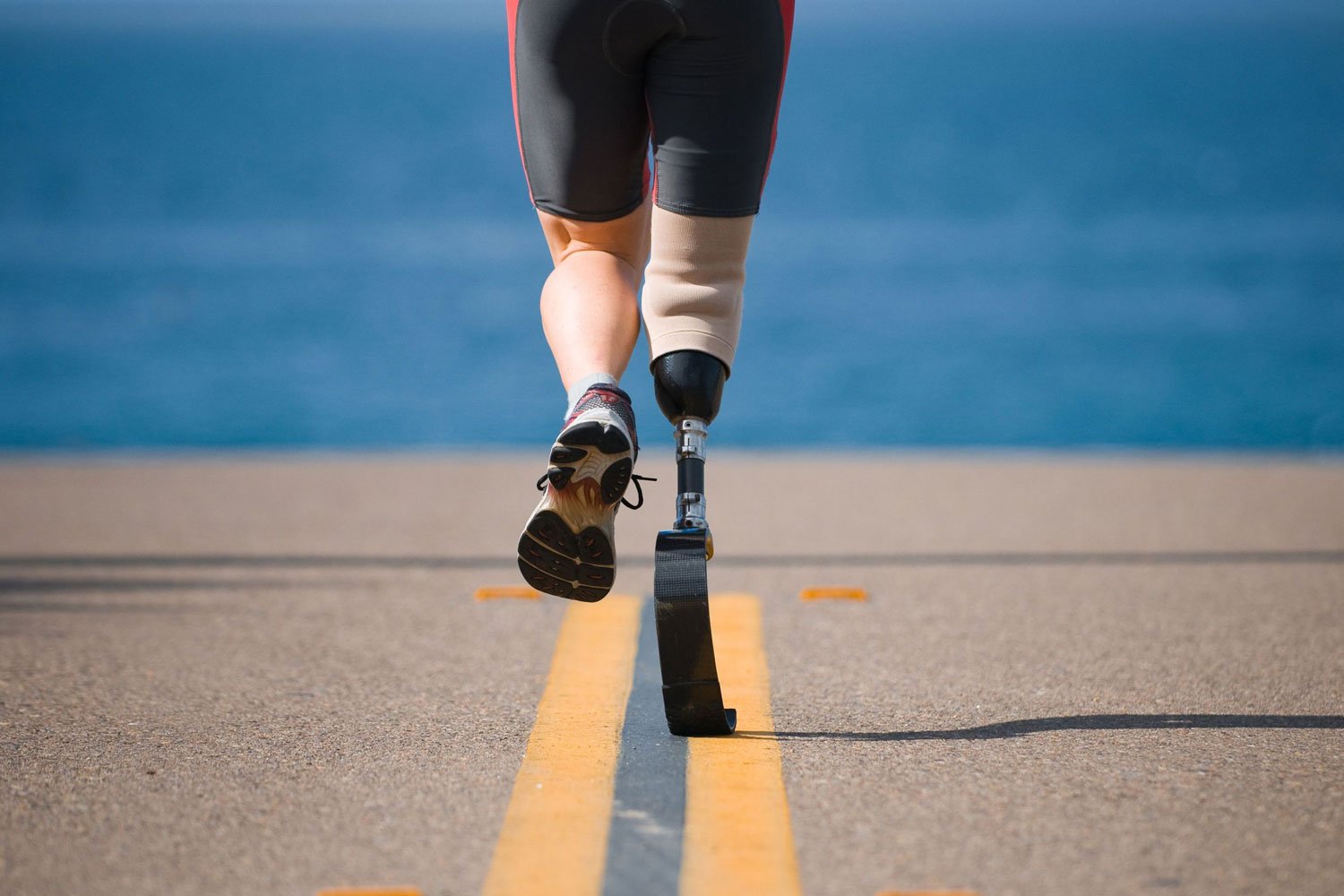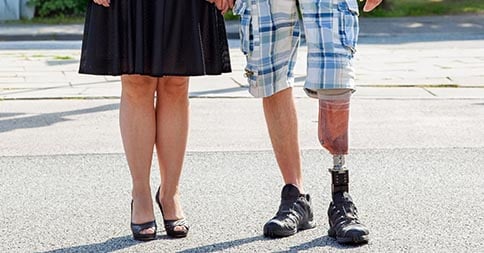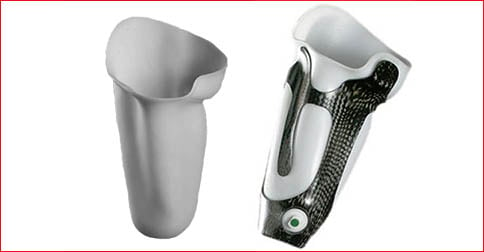If you wear a prosthetic limb, you know the prosthetic limb socket is of utmost importance. In fact, in many ways, it is the most important part of your prosthesis. The socket has to fit perfectly in order to give you the comfort and flexibility you need; otherwise, wearing your device will be uncomfortable and impractical.
Read on to find out what makes BioTech’s Comfort Socket so special!
Unique Design
Our transfemoral design is specially made to bring you the highest possible level of comfort and mobility with your prosthesis. Some of the features you’ll find with our Comfort Socket include:
- An increased level of control
- A high level of flexibility to allow for a smooth bending motion
- Relief of discomfort on pressure points
- Reduced socket rotation, which allows for more stability
- A high level of contouring around your residual limb
With these design aspects on your prosthetic limb socket, you’ll feel more comfortable, flexible, and confident than you will with other designs.
Special Advantages
One of the main advantages of the Comfort Socket is the way it is specifically molded to fit your residual limb. No one else’s socket will fit you because each one is made for a particular wearer. This kind of customization gives you a lot of control and proprioceptive feedback.
Additionally, we’ve worked hard to give your pressure points some relief. With the Comfort Socket, the weight-bearing characteristics have been equalized, which means any bony sections of your residual limb won’t be subject to high pressure. All of this helps prevent swelling and maintains proper circulation, resulting in even more comfort for you!
Looking for a Better Prosthetic Limb Socket? Look No Further!
At BioTech, your comfort and satisfaction are our top priorities. What better way to deliver those things than with our Comfort Socket? If we can give you a high level of mobility and a perfect socket fit, then we know we have done our job well. If you have questions about our Comfort Socket or you’d like to speak with us about a fitting, contact us today! We are always here to help!
Get ready for sand and surf, because summer is upon us! If you’re planning to head to the beach this year, or even if you’re just going to stick around the house, you may have concerns about how your prosthesis will hold up in the heat. Rest easy! We have some great advice for successfully wearing a prosthesis in the summer.
(Your skin may need some extra attention this summer, too!)
Sweat and Swelling
As the mercury rises, two things may affect the fit of your prosthesis: increased sweat production and the swelling of your residual limb. We all know that a poorly-fitting prosthesis isn’t any fun, so what can you do to prevent or help this situation?
Call your prosthetist to discuss your summer plans. He or she may be able to make a few adjustments to your device that will reduce the effects of swelling and sweating, and provide you with more comfort during these hot months.
Sand and Water
Headed to the beach with friends or family? Awesome! Just be sure to watch out for the possibly harmful effects of sand and water on your prosthesis. Water may sneak into the mechanical parts of your prosthesis and cause rust -- not to mention possibly put your warranty in danger. Sand may also get into the same places and cause poor functionality.
To reduce the risk of sand damage to your prosthesis, cover it up (especially the mechanical parts) with a socket cover. As for water damage, the best option is to swim without your prosthesis, which also gives your residual limb some breathing room. If you need your prosthetic device in order to swim, consider a waterproof or water resistant option that will give you the protection you need during your aquatic activities.
Wearing a Prosthesis in the Summer Is Easy with BioTech!
Whether you’re headed to the beach, the mountains, or your couch, BioTech can help you enjoy the summer to its fullest. Contact us today!
Today’s prosthetic devices are nothing short of extraordinary. With modern developments like carbon technology, your prosthesis is lighter and more functional than ever before! However, this wasn’t always the case. Limb loss isn’t a new thing, and neither are prosthetic devices -- so what did people do centuries ago? What kinds of prostheses did they wear? Let’s take a look!
The Earliest Prosthesis
From what we can tell, the earliest example of a prosthetic device was -- wait for it -- a toe! Specifically, it was a big toe, and it belonged to an Egyptian noblewoman between 950 and 710 BC.
It’s a bit surprising that the first prosthesis was something as seemingly insignificant as a big toe, and not something more substantial, like an arm -- but the thing about Egyptian culture back then was that they were very concerned about wearing their sandals. If you were going to wear traditional Egyptian thong sandals (and anybody who was anybody was wearing them, of course), then you needed your big toe!
For this woman, wearing a prosthetic toe was as much about function as it was about her identity as an Egyptian and a noblewoman. If she couldn’t wear her sandals, then she couldn’t be who she was supposed to be -- or so she must have thought.
The Most Famous Early Prosthesis
In the history of prosthetic limbs, the most famous Ancient Roman with a documented prosthesis was General Marcus Sergius.
Sergius lost his right hand in the second Punic War. He was given a prosthesis made from iron that allowed him to properly hold his shield and keep fighting. The loss of his hand occurred very early in his military career, but it didn’t stop him from escaping both times when he was later captured twice by Hannibal.
The Beginning of Modern Developments
It wasn’t until the early 16th century that Dr. Ambroise Paré made great progress in amputation surgery and prosthetic limbs. He was the very first person to develop a prosthetic hand with hinges and a leg with a locking knee joint.
There wasn’t much progress with prosthetic limbs between the 1500s and the 1800s, but there were significant advancements in amputation surgery in the mid-19th century that enabled doctors to shape the residual limb for better attachment of a prosthesis. The limbs themselves weren’t much improved from centuries before, but for people with limb loss, things were starting to go down the right path.
BioTech: Where History Meets Modern Technology
We value the lessons of the past, but we also know that technological progress is vital! At BioTech, we work hard to make sure your prosthesis fits and functions exactly as it should. We won’t give you an iron hand like Sergius, but we will give you a new limb that allows you to live a full, rich life! Contact us today for more information!
Growing up is hard for anyone, but for children with limb loss -- whether they were born without the limb or they lost it at some point in childhood -- getting through school, and just getting through life in general, can be even more challenging. What are some ways that children with limb loss can love who they are and embrace their new life? Let’s take a look!
#1: Remember -- It Will Get Easier!
No matter when a child loses a limb, they face multiple difficulties as they learn to adapt. One of the best things to do is to remember that wearing a prosthesis, or simply living with limb loss, will get easier as time goes on! Eventually, it will stop feeling like such a production and start feeling normal. This isn’t to downplay the seriousness of the loss; it’s meant to give them hope that their life can be full and bright, even after limb loss!
#2: Lead by Example
Most people don’t know how to act around children with limb loss. They may ask too many questions or try to make jokes because they’re nervous. To set them at ease (and ultimately set the child at ease), the child should talk about the subject and about themselves in the way they’d like others to talk about it. Whether this involves humor or seriousness is up to them, but the best way to educate others about how to treat them and their limb loss is to show them firsthand.
#3: Tell Others How to Help
Sometimes, children assume their parents or other family members know how they’re feeling, but this isn’t always the case! Encourage children with limb loss to explain how they’d like to be supported. It may take some prodding, but eventually, they’ll be able to express at least one or two opinions on the matter -- and then their support network will be able to do the very best job possible!
BioTech Is Your Source for Help for Children with Limb Loss
At BioTech, we understand the need to give children specialized treatment and devices, and have developed a suite of services specifically for youth, from infants to adolescents. If you have questions about our pediatric services, contact us today! We’d love to help!
After limb loss, it’s important to surround yourself with a supportive community. But what if you’re not sure where to turn? If you’re looking for new amputee information, the following organizations are sure to keep you educated, active, and encouraged!
The Amputee Coalition
This organization is passionate about helping people with limb loss and their families live a full life and enjoy high-quality patient care. They are also dedicated to limb loss prevention. On their website, you can find an extensive limb loss resource center, assistance in finding a support group, and a schedule of upcoming events. Check out The Amputee Coalition online!
Challenged Athletes Foundation
With a focus on athletic ability, this organization dedicates itself to empowering people with disabilities to be great athletes. From grant funding to community outreach, CAF has dozens of ways to get involved and reach your athletic potential! Visit the Challenged Athletes Foundation website for more new amputee information related to athletics.
PLAY Foundation
Sports, education, and the arts are PLAY Foundation’s passions! They are dedicated to helping people with limb loss lead active, fulfilling lives. 10 qualified applicants can participate in PLAY annually, and you can find application information on their website. Check out the PLAY Foundation website for more information about this amazing organization!
BioTech Limb and Brace is Your Source for New Amputee Information!
Looking for more limb loss resources? Need fitting services? BioTech is your solution! Contact us today for all your prosthetic and orthotic needs. We can’t wait to help you recognize all your possibilities!
While all of our clients hold a special place in our heart, we like to shower a little extra love on our veterans. That’s why we’ve put together this list of limb loss resources for the men and women who serve our country so well. Check out these websites that seek to care for our veterans with limb loss!
- Air Compassion for Veterans (www.aircompassionforveterans.org) strives to ensure that all warriors, veterans, and affected family members have access to specialized medical care, as well as programs that can help them reintegrate into everyday life.
- Building for America's Bravest (www.ourbravest.org) offers adaptive homes for injured soldiers.
- The Gary Sinise Foundation (www.garysinisefoundation.org) honors veterans, their families, first responders, and others in need by adapting their homes and cars, providing wheelchairs, and building customized SmartHomes.
- The Independence Fund (www.independencefund.org) offers funding for modified bicycles for injured veterans.
- Wounded Warrior Project (www.woundedwarriorproject.org) creates programs to help wounded veterans find work, athletic events, support groups, and more.
If you’re a veteran who would like to speak to prosthetic and orthotic device experts, look no further than BioTech Limb and Brace in Birmingham, Alabama. Not only can we offer limb loss resources to help you get your life back on track, we can also help with prosthetic limb fitting.
Ready to talk? Contact us today!
You know your body has been impacted by limb loss, but what about your mind? Losing a limb affects nearly every aspect of your life, so it makes sense that your emotional and mental states would need just as much recovery time as your body.
When you’ve lost a limb, it’s important to approach recovery in a holistic fashion. Your body’s recovery is important, obviously -- but it’s no more or less important than your mental, emotional, and spiritual recovery.
The Psychological Stages of Limb Loss
Losing a limb often triggers the well-known five stages of grief. These are:
- Denial - “I cannot believe this has happened to me.”
- Anger - “This isn’t fair. I shouldn’t have to go through this.”
- Bargaining - “Maybe if I do x, then I will be whole again.”
- Depression - “Life is meaningless now. What’s the point?”
- Acceptance - “This is my new normal, so I might as well make the best of it.”
While it’s difficult to go through this sequence of psychological responses, it’s also important to allow your mind to process what has happened in its own time. Engaging appropriately with each stage of grief gives you the space to work through your loss, deal with your negative emotions, and ultimately move into your new life with hope. There are top prosthetic companies who can help with this, too -- it’s always good to have experienced experts on your side!
Body Image
It’s no secret that society’s view of beauty can be pretty narrow-minded. If you’re not a thin, toned, perfectly-proportioned supermodel with all four limbs, you may find that you don’t line up with the “beautiful people” on TV or elsewhere. And in spite of the fact that you know those standards are impossible to live up to, the idea can still take root in your mind and poison your self-perception.
The first thing to remember is that those people on TV have entire teams of hairstylists, makeup artists, wardrobe designers, and personal trainers making them look unattainably attractive every day of the week. So not only is that kind of standard completely unrealistic for anyone, it’s not even realistic for those people without an army of beauticians by their side.
The second thing to remember is that it’s more important to feel good about yourself than to worry about how you look. It might sound trite, but when you feel good about the way you look, it doesn’t really matter how others perceive you because you’ve already decided you look good -- even if you don’t match up with society’s definition of “good.”
(Who came up with that definition, anyway? Maybe it’s time to redefine beauty completely.)
Getting Support from Family and Friends
A vital part of working through the psychological impact of limb loss is surrounding yourself with a support network. Friends and family who will love you, challenge you, and encourage you can make all the difference in processing your new normal and living a joyful life. Additionally, calling in the experts at one of the top prosthetic companies can help with seemingly small things that are actually quite important, like making sure your prosthesis fits perfectly.
The people in your support network should be empathetic, but they shouldn’t treat you like a baby. Instead, they should focus on staying by your side as you move through the stages of grief, encouraging you when you reach the point of acceptance, and exploring new possibilities with you as you move into your new life.
New to Limb Loss? Contact a Top Prosthetic Company Today!
If you’re looking for dedicated, passionate professionals to help you recognize your possibilities after limb loss, look no further than BioTech Limb and Brace in Birmingham, Alabama. Contact us today!
For athletes who are new to limb loss, pursuing competitive sports with a prosthetic device can feel awkward and uncertain. You may be wondering if you’ll ever throw a baseball as well as you did before, or how you’ll manage to score a goal with your new prosthetic foot.
Thanks to today’s prosthetic limbs technology, you can still dominate the basketball court while wearing your prosthesis! Here are five athletes with prosthetic devices who are sure to ignite the competitive spirit inside of you.
#1: Jeremy Campbell
What do you do when you’re born without your right fibula? You set a new Paralympic world record for discus, that’s what.
Jeremy Campbell wanted to become the first disabled athlete to launch a discus 60 feet in an official competition, which he achieved. But it was his world record throw of 62.18 meters at the BT Paralympic World Cup in Manchester, England, that really set him apart from other discus competitors. Now, Jeremy wants to compete not only in the Paralympics, but also against “able-bodied” athletes.
#2: Aimee Mullins
One of People Magazine’s “50 Most Beautiful People in the World,” Aimee Mullins was born without fibula bones in both legs. She had her legs amputated below the knee on her first birthday, and learned to walk with prosthetic legs by her second birthday.
Aimee never let her prosthetic legs keep her from enjoying normal childhood activities! Whatever her friends were doing -- swimming, skiing, playing soccer -- Aimee was right there with them. Now, she’s a Paralympic athlete.
#3: Scott Schroeder
After a roadside bomb attack in Afghanistan took both his legs and one arm, soldier Scott Schroeder refused to stop enjoying SCUBA diving.
He now wears two prosthetic legs and one prosthetic arm, and has special flippers attached to his legs so that he can explore underwater worlds. Scott Schroeder is proof that with today’s prosthetic limbs technology, losing a limb (or two, or four) doesn’t mean that you can’t have fun anymore!
#4: Hugh Herr
After a terrible climbing accident resulted in the loss of his legs as a teenager, Hugh Herr might have been justified in never climbing a cliff again -- but of course, that’s not his story. Even when one of his prosthetic legs fell off during a climb, he simply waited for it to be lifted up to him before continuing to the top.
Aside from running a lab at the Massachusetts Institute of Technology that makes bionic legs, Hugh Herr also insists that prosthetic limbs aren’t a disadvantage at all -- they’re actually an advantage.
#5: Bob Radocy
Not only does Bob Radocy wear a prosthetic hand, he also designs prosthetic devices that give athletes the ability to participate in multiple sports. After losing his hand in a car accident, Bob experimented with multiple prosthetic devices before becoming frustrated enough to just design his own.
Ultimately, Bob’s prosthetic hand design gave him the ability to not only enjoy any sport he wanted, but to be competitive with his two-handed friends, as well.
BioTech Is Your Expert on Prosthetic Limbs Technology for Athletes!
Ready to start writing your own inspirational athletic story? Contact BioTech today to recognize your possibilities as an athlete with a prosthetic device!
If you’ve experienced limb loss, you’re familiar with the challenge of finding normalcy in everyday life. With a prosthesis, your body feels, looks, and moves differently than it did before. Everything seems to take an extra dose of effort, from the big stuff (like walking) to the small stuff (why does brushing your teeth suddenly require such focus?!).
Sometimes, it can be tempting to dwell only on the hard and lose sight of the good -- but there are many ways you can learn to not only live with your new prosthesis, but love it, too! Read on for tips to fall in love with your prosthetic or orthotic device from BioTech Limb and Brace in Birmingham, Alabama.
Love Your Fit
You’ve probably heard it a million times, but fit is (almost) everything! Sure, it can be a tedious process, but once you hit that optimal fit, your relationship with your prosthesis will improve exponentially.
Every prosthesis is a unique combination of parts that must work with your body, and it may require several adjustments before you hit the sweet spot -- but once you do, you’ll be so glad you stuck with the process!
Consider Your Lifestyle
What are your roles in life? Are you a parent, a coach, an athlete, or a businessperson? Your prosthesis should fit your lifestyle, not hamper it!
If you engage in an activity that your prosthesis isn’t designed for, you may experience frustration at your inability to do that activity well. Even worse, you may damage your device or injure yourself!
A prosthesis that fits your life is vital for your emotional and mental state (nobody wants to feel frustrated all the time!) as well as your physical health (no injuries, please!), so even if it means having more than one device for the various aspects of your life, make sure you are wearing the appropriate type.
BioTech Limb and Brace is Your Prosthetic and Orthotic Device Expert!
Whether you’re already excited about learning to love your prosthesis or you need a little help getting there, our passionate and dedicated staff is ready to show you all the ways you can recognize your possibilities! Contact BioTech today!
A prosthesis helps restore the function and appearance of your missing limb. At BioTech Limb and Brace, we realize the importance of each part of a prosthetic device. From the control system at its foundation to the aesthetically pleasing finish, your custom prosthesis should help you recognize new possibilities! Learn more about the anatomy of a prosthetic device.
Lightweight Prosthetic Leg Device
The fabrication of a lightweight prosthetic leg device is an intricate process that requires a high degree of skill and technology. The materials that make up your prosthetic device must be durable enough to balance your body weight and the flexibility of your movement. At BioTech, each prosthetic device is custom-built for each patient. Our end goal is to make sure your limb fits perfectly and provides you with a new level of convenience.
The Control System
What once started as a wooden extension of the leg has now developed into a more sophisticated device that mirrors a natural human limb in capability, flexibility, and appearance. Prosthetic limbs are more complex than they may seem. At the core of any lightweight prosthetic leg is the control system, some of which have smartphone integration. The lightest limbs are made with carbon technology.
BioTech Comfort Socket
Attached to your residual limb is your socket, which ensures comfort and flexibility. The ideal comfort socket is transfemorally designed with the wearer in mind. Because the socket is the connection point between your residual limb and your prosthetic device, it is arguably the most important part of your device.
Trust the experts at BioTech Limb and Brace in Birmingham, Alabama!
BioTech Limb and Brace was founded in Birmingham over fifteen years ago. Our personal, caring, and passionate team remains focused on our patients, whose comfort and success is our first priority. Learn more about our services and the products we offer at BioTech. Contact our experts today!
